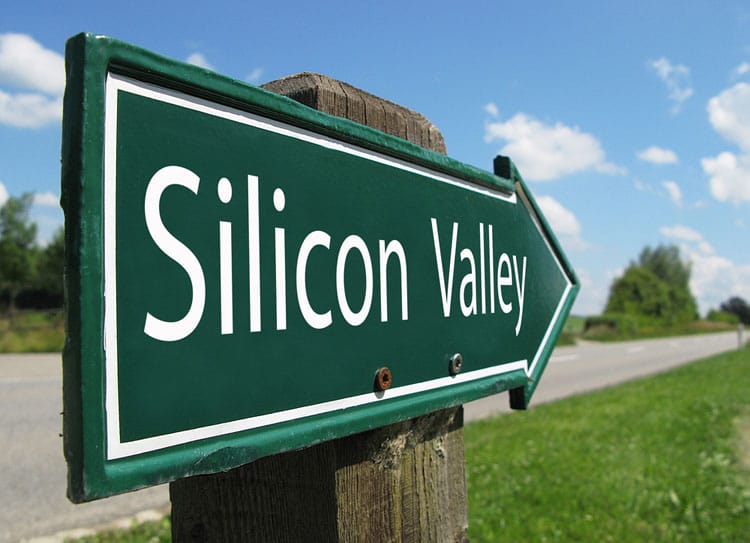If you live in Silicon Valley, chances are that you are reading this article from your iPhone, while riding in an Uber car to the company you work at that holds the next world-changing technology.
But it goes beyond the technology we see and hold in our hands and includes all the industries the Valley has helped flourish, providing growth for technology that shapes our lives in ways many of us not only don’t understand, but don’t even know. The minds and innovation that live and thrive here hold the keys to future technology innovation. The San Francisco the Bay Area receives more than 50 percent of the country’s VC funding.
Silicon Valley offers unparalleled access to high-quality engineers, a risk-taking culture, venture capitalists and superb universities. But the reason this particular spot ended up at the heart of the technology industry might surprise you. It all starts with Sputnik.
Americans were brokenhearted when Russia beat the United States in the space race with the launch of Sputnik 1. NASA was created, and NASA needed high-powered components to be developed in order to put the first person on the moon. Fulfilling that need was Fairchild Semiconductor, which was founded in the Bay Area in the midst of Cold War competition.
The seminal event was the spark that ignited Silicon Valley’s innovative, risk-taking culture five decades ago and it has truly shaped the way our lives have been, and will continue to be, enhanced by technology. If not for Sputnik we would not have witnessed the massive technology innovations that spawned from Fairchild Semiconductor and “Fairchildren” companies like Intel, AMD and NVIDIA. This was just the beginning. A flourishing hardware industry emerged. As a result, the software and Internet industries also flourished.
Bay Area innovation is changing the way we do everything – from Uber disrupting the taxi industry, to Twitter disrupting the media industry and Facebook disrupting the communications industry. One can even argue that Barack Obama is president partially as a result of embracing social media technologies and Salesforce’s cloud-based software for campaign management – talk about a political disruption! In truth, you can look at any industry that has yet to be optimized by tech and bet that in the not so distant future it will experience a revolution in part due to innovations from Silicon Valley.
Think about the transportation sector, an industry that hasn’t changed much in the last half century, but is on the precipice of complete technological disruption. Automated, self-driving cars are something we already see sharing our Bay Area roads, but in as little as five years these cars will likely be broadly available, instituting a massive disruption in the way we commute. Longer-term, this disruption will also offer a sizable boost to economic growth, with the number of accidents falling because of this sensor-based self-driving technology.
The opportunity for mobile commerce and communication are also limitless. While these are areas that receive a lot of air time, it’s breathtaking to think that each of us with a smartphone holds more power in the palm of our hand than every computer we used to put a person on the moon (take that, Sputnik!), or that a child in Africa has more and faster access to information than Bill Clinton did in the 1990s. These revolutionary communications tools have worked to keep rogue governments in check, spurred political revolutions and enabled countries without sophisticated, tech-enabled banking systems to able to flourish, thanks to smartphone computing and the advent of Bitcoin. In short, the disruptive power of technology can, and will, rock every industry as we know it on a global scale.
Still more industry-disrupting companies will be born in the Bay Area over the next decade, leveraging technologies via the Internet of Things (IoT) movement or, in true Valley style, creating an entirely new movement altogether.
As an investor, the best investments are platform solutions because they own the ecosystem and are technologies that have the ability to scale and grow. Facebook, LinkedIn, eBay and even YouTube (as a media platform) are great examples of platform-based approaches that have scaled, with skyrocketing numbers of users, but also content or applications that run on top of them. It starts as one platform and morphs into something much bigger. The healthcare industry is beginning to see the platform tectonic shift that will change the way we all give and receive medical services. Once we address cloud-based security issues, enterprise public cloud computing will also flourish.
Other regions have tried to emulate what the Bay Area has done with little success. The region’s technological prowess isn’t just due to great minds and high-quality schools like Stanford and UC Berkeley. If this were the case, then Oxford and Cambridge would make London a dominant tech center. Silicon Valley is a fertile technology crescent 50 years in the making. It is the product of Sputnik-induced competition, a 1960s induced cultural renaissance and an open-minded, risk-taking approach where failure is accepted. Silicon Valley cannot be replicated anywhere else, but the effects of its innovation will continue to be shared around the world.
This article originally appeared on Entrepreneur
As an Amazon Associate, TechCity may earn a small commission if you shop these products.
















